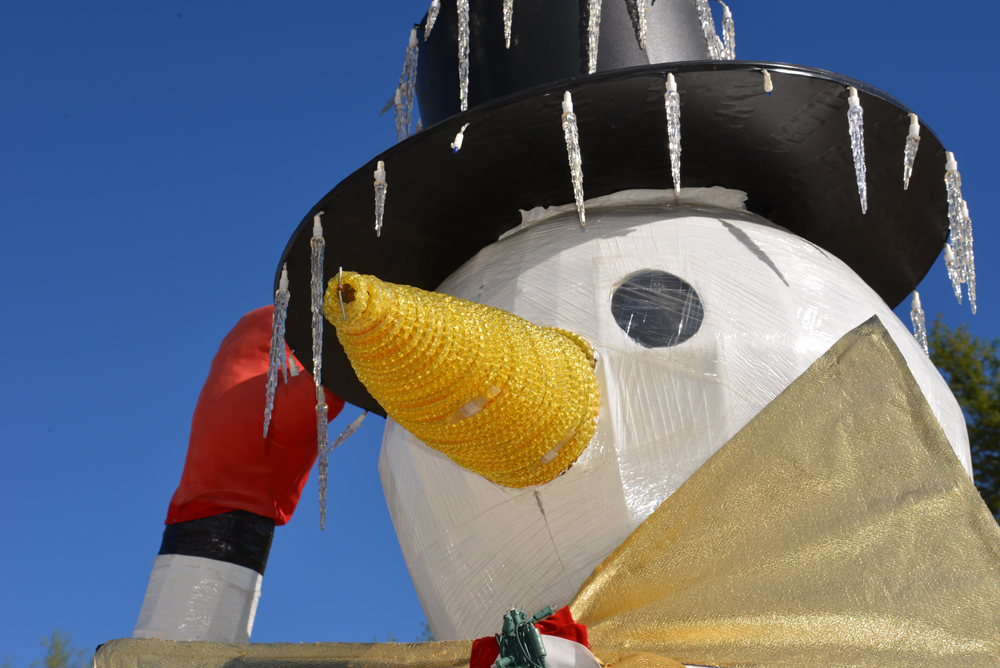“This is hands-down one of the best DSLRs we’ve ever tested.”
- Outstanding stills with lush “analog” feel
- Excellent low-light shooting
- As sophisticated, flexible as you want it to be
- Even “affordable” full-frame cameras are still very expensive
- Heavy, bulky
- Delivers quality movies but not the finest available
[Update on March 28, 2014: Nikon has issued a statement reiterating its support for D600 owners, even if the camera is out of warranty. While Nikon still believes the issue of “granular black spots” affects a small percentage of users, it has become a big enough of an issue. If you’re shopping for a new camera, check out the D610. If you are thinking about purchasing the D600, whether new or used, be aware of this issue.
[Update on February 26, 2014: While a great camera at the time of review, Nikon has introduced a successor, the D610 (see review here). The D610 resolves an issue with the D600’s sensor in select cameras, in which spots appeared in images due to dust particles. If you are considering the D600, make sure you’re aware of the issue and check out the newer D610 as well.]
The Nikon D600 is one the most affordable full-frame DSLRs available. While hardly cheap, this $2,099 camera is, simply put, terrific. Just how good? It could change the way you look at digital photography. Read on for the very pleasant details.
Features and design
We’ll get down and dirty soon, but first, some words on why the D600 takes really fine images. As noted, this is a full-frame camera. In comparison to the $599 Nikon D3200, the two cameras share the same number of megapixels, but the chip inside the D600 has more than twice the surface area of the popular D3200. With larger pixels, it’s easier to capture photos in low light with a minimal amount of noise. Far more important is the fact the colors have the lush “analog” feel of 35mm film.
We were blown away by the results, so much so that this jaded camera reviewer rediscovered how fun and rewarding photography could be after using it. The same can be said about other full-frame cameras like the Sony SLT-A99 and Canon EOS 6D.
The Nikon D600 is a classic DSLR, which brings some real benefits and drawbacks. The good points are picture quality (naturally), fast response, and the ability to tweak your images to the Nth degree. The downsides are weight, size, and expense. The D600 weighs about 26.8 ounces, but that’s just the camera body. Add a quality lens like the $2,699 24-85mm supplied in the kit and now there’s nearly 4 pounds in your hands, a true commitment for your shoulders and bank account. But if you’re really serious about photography, it’s an investment worth considering.
The D600 is your basic black DSLR with an iconic Nikon red swoosh on the grip and just a few fairly unobtrusive logos (see photos). The grip is comfortable with a nice textured surface that helps keep it steady. Along with the AF Assist lamp, the key feature on the front is the Nikon F mount, which means you have an excellent selection of glass available. Since this is a full-frame camera, the lens’ focal length is exactly what’s stated, so the 24-85mm kit lens is just that – no need to multiply by 1.5x, as you would to accommodate for the APS-C sensors found in affordable DSLRs and Compact System Cameras.
On the top deck, you’ll see one of the things that separate inexpensive DSLRs from the elites: an LCD control panel that lets you quickly check your settings. Turn the power switch a notch, and it lights up so you read them in the dark. Starting on the far left, you’ll see a locking mode dial that sits on a release mode dial. There’s a hot shoe for an accessory flash or stereo mic, a red dot movie button, as well as buttons for exposure compensation and metering mode.

Unlike DSLRs for pros, the D600 offers a solid selection of scene modes (portrait, landscape, et al) so you can step up to this higher-quality camera with a safety net. Of course, there’s full auto, P/A/S/M, and two user-selectable options. The release mode dial lets you adjust your burst mode: Low lets you choose the number between 1 and 5 fps, while High is a fairly speedy spec of 5.5. It’s not a Canon EOS-1D X with 12 fps, but it has the speed to handle most action scenes. Pro cameras will also have a 1/8000th of a second top shutter speed; the D600 has a more common 1/4000th.
If you’re looking for a subdued back panel, forget it. The camera has buttons, labels, and dials galore. Not that this is a bad thing, since they allow you to quickly access the parameter you want to adjust (ISO, WB) or enter into Live View (using the LCD to capture stills and videos). The camera has a nice 3.2-inch LCD (rated 921K dots) with a protective screen. It’s a good one, but OLED would be a nice upgrade for the next generation. The optical viewfinder has a diopter control, is fairly bright, and has a 100-percent field-of-view in full-frame mode.
The 5.6 x 4.4 x 3.2 (in inches) camera has dual SDXC card slots (UHS-1 compatible), HDMI out, mic and headphone jacks, and an input for an optional GPS. The bottom has the battery slot; the supplied battery is rated a very good 900 shots.
Taking a step back, you’ll find no surprises: The Nikon D600 looks the part of a serious camera and has all the buttons and keys serious shutterbugs demand. Whether they’ll ever use them all is another story.
What’s in the box
The box contains the camera body, kit lens (if you go that route), strap, battery, plug-in charger, USB cable, plus various caps and covers. To give you an idea how much firepower is available, the D600 is supplied with a 340-page user’s manual. It’s not “Fifty Shades of Grey,” but it’s definitely worth a read (you’ll be surprised how far you can get through). You also get a CD-ROM with Nikon ViewNX2 software for handling RAW files and working with your images.
Performance
We’re happy to say we gave the D600 a workout in several states, from the desert Southwest to the holiday-bedecked streets of New York City. We shot RAW+JPEG Fine files at best resolution (6016 x 4016 pixels), using the 24-85mm VR (vibration reduction) lens, a 32GB UHS-1 SDHC card, and trying a variety of modes from auto to full manual. Videos were also the highest resolution (1920 x 1080/30 fps MOV files). Once done, stills were reviewed on a computer with 100-percent-plus blowups and our movie-making efforts were displayed on a 50-inch plasma via HDMI.
Using the D600 is relatively simple, as most controls are logically placed. You should realize there is a learning curve as you get to know the camera; companies don’t supply 340-page manuals for laughs. There are a few things that take getting used to, such as the locking mode dial. You can’t quickly turn from auto to shutter-priority without pressing a button and twisting the dial. And don’t think of taking a quick movie clip, as there are several steps involved. These are hardly deal breakers, but they are some of the idiosyncrasies you’ll find on every camera.
One of the very cool things about the D600 is that Nikon has incorporated the 39-point AF system and 2016-pixel RGB 3D Color Matrix II metering we liked so much on the D7000. As we reviewed our shots, we remembered how well the system worked during testing. What this means for you are nicely exposed, nicely focused images, as you can see by the samples. Also very cool is the incredible amount of detail. You can practically fall into your shots as you enlarge the files on your screen.

As we’ve pointed out, you’ll have better luck dealing with digital noise at higher ISOs with a larger sensor. The native ISO range of the D600 is 100-6400 with custom settings for 50, 12,800, and 25,600. We took a bunch of images using available light near the Christmas tree at Rockefeller Center and were blown away by how well the camera handled ISO 6400. And the built-in VR in the lens helped keep things fairly blur-free. Given that, many times when the flash popped open automatically, we just snapped it shut and fired away with available light. Overall, the results were outstanding—and that’s pretty much the recurring theme here.
The D600 shoots Full HD videos but since there’s just a mono mic in the camera, you’ll need an accessory to record stereo. Since we weren’t shooting a rock concert, it wasn’t a big drawback. As DT readers know, we’re not huge fans of the usability of DSLR videos, especially when compared to a full-featured camcorder or Sony’s Translucent Mirror Technology cameras like the new A99. That said, the Nikon did a solid (but not fantastic job) with Rockefeller Center ice skaters and other scenes.
A final note about the supplied lens—it will leave you wanting more. Although it does a good job for wide-angle and portrait shots – and is fairly bright at f/3.5-f/4.5 – we found ourselves looking for much more on the telephoto end as we walked through the California desert and concrete canyons of NYC. If you have a high credit card limit, Nikon has loads of quality lenses to sell you.
Conclusion
This is hands-down one of the best DSLRs we’ve ever tested. Picture quality is simply great, with accurate colors that really pop. You can enlarge a nicely exposed shot 100 percent and spend hours pixel-peeping, appreciating all the detail. Noise is barely an issue even at levels like ISO 6400. Toss in first-rate autofocus, metering, and response and you have a serious package in your hands. Is it perfect? No camera achieves that mark, but serious photographers will love this baby. Unfortunately you will definitely go broke when you buy the high-level of glass the D600 deserves.
Highs
- Outstanding stills with lush “analog” feel
- Excellent low-light shooting
- As sophisticated, flexible as you want it to be
Lows
- Even “affordable” full-frame cameras are still very expensive
- Heavy, bulky
- Delivers quality movies but not the finest available







